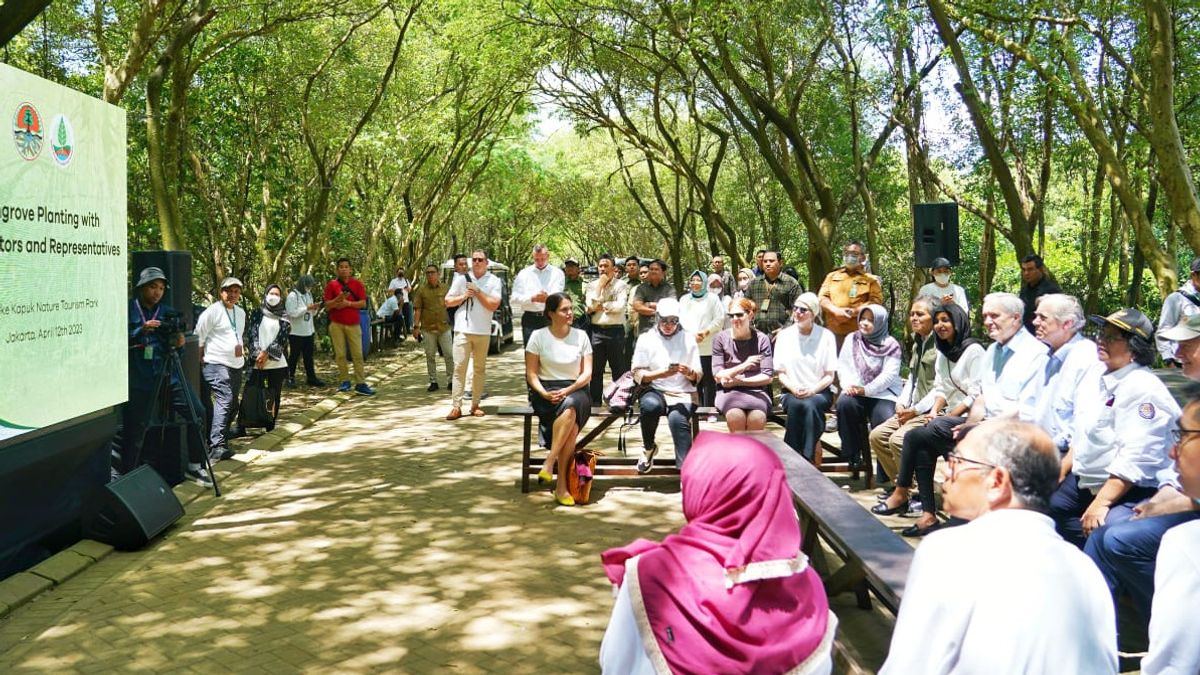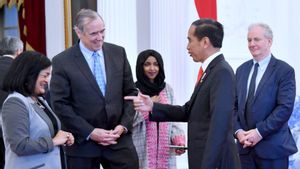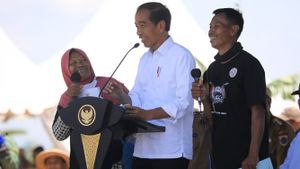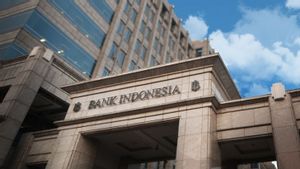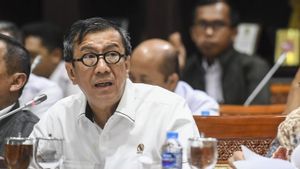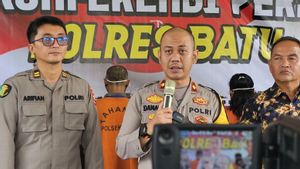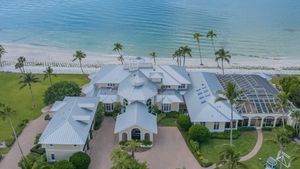JAKARTA - Minister of Environment and Forestry (LHK), Siti Nurbaya together with the US Congress Delegation secured mangroves at Angke Kapuk Nature Tourism Park (TWA), Jakarta. This was done after holding a joint meeting in Manggala Wanabakti to discuss climate issues and management of biodiversity, especially Primata/Orangutan.
The US Congressional delegation consisted of Senator Jeff Merkley, Senator Chris Van Hollen, Representative Lloyd Doggett, Representative Pramila Jayapal, and Representative Ilhan Omar and several staff ranks.
There, the US Congressional delegation received an explanation regarding the process of rehabilitating the coast around the TWA. The Angke Kapuk TWA area was previously worked on by dozens of illegal shooters.
Then this area began to be restored in 1998. Changes in areas from forests to fish pond areas not only eliminate trees but also damage nature and mangrove ecosystems.
After 12 years of struggling to clean up the area from illegal cultivators and replanting the missing mangrove tree, TWA Angke Kapuk was finally inaugurated on January 25, 2010.
The US Congressional delegation praised coastal rehabilitation efforts with mangrove planting, reported by the Public Relations of the Ministry of Environment and Forestry, Wednesday, April 12.
SEE ALSO:
Indonesia is one of the countries that has the largest mangrove area in the world. Based on the National Mangrove Map in 2021, the mangrove area in Indonesia will reach an area of 3,364,080 million Ha.
The area is then divided into several categories, namely a heavy mangrove area of 3,121,240 Ha or 92.78% of the total area, then a moderate mangrove area of 188,366 (5.60%), and a rare mangrove area of 54,474 Ha (1.62%).
The mangrove ecosystem has a very important function for the environment and the economy of the surrounding community. Mangroves provide raw materials that can be utilized by the surrounding community, such as non-wood forest products, food sources, fish products, and so on.
Mangroves can also grow close to tourist attractions such as coral reefs and sandy beaches that can provide knowledge and opportunity to see wild animals.
In addition, the mangrove ecosystem also acts as a fort to protect the coast from abrasion, strong waves, storms, and rising sea levels. No less important, the mangrove ecosystem is an important habitat for breeding fish and other animals.
The English, Chinese, Japanese, Arabic, and French versions are automatically generated by the AI. So there may still be inaccuracies in translating, please always see Indonesian as our main language. (system supported by DigitalSiber.id)
